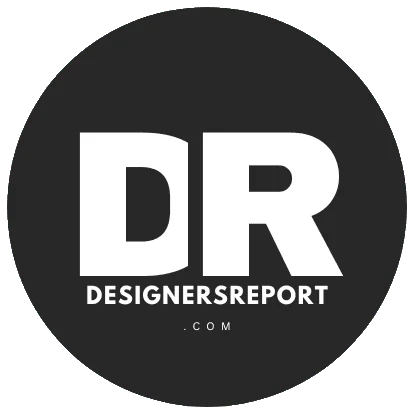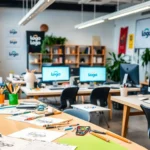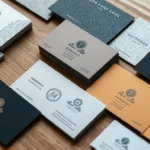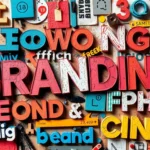Can a machine create art that touches our hearts? This question is at the core of the AI art revolution. It challenges how we see creativity and expression. Digital artist AI tools are changing the world of art, making it more diverse and exciting.
Technology and art are coming together in a new way. AI is now a partner in creating art, helping artists think of new ideas. This change is not just about new tools. It’s a big shift in how we make art.

Artists like Amy Karle and Kira Xonorika are leading this change. They use AI to explore new artistic areas. Their work shows the power of AI in art and makes us think about technology’s role in creativity.
AI is not just changing art. It’s also changing industries like fine art and design. As you learn more about AI art, you’ll see how it’s changing what we think of as art.
Want to see the latest in digital art? Check out Fiverr for talented artists using AI in their work.
Key Takeaways
- AI is revolutionizing artistic creation and expression
- Digital artist AI tools are becoming essential in modern creative workflows
- AI art challenges traditional concepts of authorship and creativity
- Artists worldwide are using AI to explore new aesthetic realms
- The integration of AI in art raises important ethical and philosophical questions
The Rise of AI in the Art World
Artificial intelligence has changed the art world, mixing creativity with technology in new ways. It started small but has grown into a big part of art.
Historical Context of AI and Art
The idea of AI and art began in the 1960s. Vera Molnar and Harold Cohen started making computer art. Their work helped create the advanced AI models we have today.
Key Milestones in AI Art Development
The journey of AI in art has seen many important moments:
- AIVA, an AI music composer, created symphonies that moved people.
- The AI-generated ‘Portrait of Edmond de Belamy’ sold for $432,500.
- OpenAI’s GPT-4 wrote entire books, showing AI’s writing skills.
Current State of AI Art Technology
Today, AI art technology is breaking new ground. Machine learning and neural networks power tools like DeepDream and GANs. These tools let artists explore new creative areas, from making worlds to improving stories.
The stable diffusion algorithm has opened up new ways to make images. Deep learning keeps getting better, giving artists new ways to express themselves. AI art is changing how we think about creativity, pushing the limits of what we can do with machines and humans together.
Want to see AI-assisted art in action? Hire skilled AI artists on Fiverr and make your ideas come to life.
Understanding AI Art Generation
AI art generation has changed how we create. AI systems learn from huge datasets of art. They find patterns and styles from different times and mediums.
This knowledge lets AI art generators make new pieces. These pieces can look like they were made by humans or machines.
The technology behind AI art involves neural networks and deep learning. These algorithms study thousands of images. They learn to copy artistic techniques and styles.
AI can now make art that looks just like human-made art. This is thanks to its advanced algorithms.

AI art generation is fast. While a human might take hours, AI can do it in minutes. This speed doesn’t mean the art is less good. It actually opens up new ways to explore art.
“AI art generation is not just about replication; it’s about pushing the boundaries of creativity and challenging our understanding of art itself.”
But AI art also raises questions. There are debates about copyright, authenticity, and the role of human creativity. These issues show the complex relationship between technology and traditional art.
| Aspect | Human Artist | AI Art Generator |
|---|---|---|
| Creation Time | 4 hours 51 minutes | 1 minute |
| Style Flexibility | Limited by skill and experience | Can mimic multiple styles |
| Emotional Depth | High | Limited |
| Originality | Based on personal creativity | Based on training data |
As AI gets better, we need to understand its role in art. We can use its power while keeping human creativity special.
To learn more about AI in art or to work with experts, you can hire a freelancer. They specialize in AI and digital art.
The Role of Machine Learning in Digital Art
Machine learning is changing digital art. AI tools are now part of the creative process. In fact, 85% of artists see AI as a partner in their work.
Neural Networks and Creative Algorithms
Neural networks are key in AI art. They analyze data and create unique art. Tools like Midjourney let you explore new digital art.

Training Data and Artistic Style Transfer
AI art uses big datasets to learn styles. This style transfer lets you add famous artists’ touches to your work. 78% of artists find this process both complex and rewarding.
Generative Adversarial Networks (GANs) in Art Creation
GANs have changed AI art. They create realistic and creative images. Over ten years, GANs have shaped digital art tools.
AI is making art more exciting, with 92% of artists eager to explore its use. Whether you’re an illustrator or artist, AI can open new creative doors.
Want to explore AI in digital art? Find a skilled freelancer to guide you in this new world.
Popular AI Art Tools and Platforms
The digital art world is changing fast with AI tools. Artists can now use many platforms that mix creativity with AI. Let’s look at some top AI art tools changing the game.

DALL-E by OpenAI is a big deal in text-to-image generation. It uses 650 million images to create art from text prompts. You can get DALL-E 3 for $20 a month with a ChatGPT Plus subscription.
Midjourney is popular for its high-quality art. It has plans starting at $10 a month. This is great for both beginners and those who need lots of AI art.
Adobe, known for creative software, has joined the AI art scene. Their Generative Fill in Photoshop is available for $19.99 a month. It lets artists add AI-generated parts to their work easily.
Stable Diffusion by Stability AI is a free, open-source choice. It’s loved by developers and artists who want more control over AI art.
- Google’s ImageFX: Ranked best overall for free, high-quality image generation
- Microsoft Designer: Powered by DALL-E 3, free to use with quality outputs
- MyEdit: Offers 10 unique AI features with a free tier of 12 images daily
These AI art tools are making art more accessible. They let people design game assets, improve websites, or make amazing visuals for presentations. As AI gets better, we’ll see even more creative tools.
For help using these AI art tools, consider hiring a freelance digital artist. They can guide you through this exciting new world.
Digital Artist AI: Redefining Creative Workflows
AI is changing how artists work, introducing new tools to the creative process. Now, you can make images and unique pieces faster than ever. Let’s see how AI is transforming digital art.
AI as a Collaborative Partner
Artists see AI as a valuable partner in their work. It helps you work more efficiently and create something new. These tools can spark ideas when you’re stuck, offering fresh views to inspire you.

Boosting Productivity and Ideas
AI-powered platforms are making creative workflows smoother across industries. You can now make concept art, logos, and storyboards quickly. This speed lets you focus on the key parts of your work – coming up with ideas and solving problems.
Breaking Through Creative Blocks
When you’re out of ideas, AI can be a lifesaver. It looks through lots of data to suggest new directions for your art. By using AI, you can get past creative blocks and explore new artistic heights.
| Traditional Process | AI-Enhanced Process |
|---|---|
| Manual sketching | AI-generated concept variations |
| Time-consuming research | Instant data analysis and suggestions |
| Limited style exploration | Rapid style transfer and experimentation |
Use AI to boost your creative work. Find an AI-savvy freelancer to improve your digital art projects today.
The Intersection of Traditional and AI-Generated Art
The mix of traditional art and AI is changing how we create. Artists are finding new ways to use their skills with AI. This leads to art that breaks new ground.
Artists are using AI to tell better stories in movies and photos. This mix lets them dive deeper into their stories. They can also add more to their visuals than ever before.

This blend of art styles brings unique looks. Traditional methods get a new twist with AI. It’s not about replacing human touch, but making it stronger.
“AI is not a replacement for human creativity, but a powerful tool that can enhance and inspire our artistic vision.” – Barbara Khaliyesa Minishi, Photographer and Filmmaker
Exploring this new area, you might find AI helps with creativity. It’s a thrilling time to make AI art while keeping your traditional roots.
| Traditional Art | AI-Enhanced Art |
|---|---|
| Manual techniques | Combines traditional with AI algorithms |
| Limited by physical constraints | Expands possibilities beyond physical limits |
| Time-intensive process | Accelerates creation and iteration |
Want to see traditional and AI art together? Look for a skilled digital artist on Fiverr to make your idea real.
Ethical Considerations in AI Art Creation
The future of AI in art is both exciting and complex. As AI tools get better, we face big questions about copyright, authenticity, and creativity.
Copyright and Ownership Issues
AI art makes us wonder who owns the art. For instance, DALL-E 2 lets users keep their prompts, but OpenAI owns the images. This changes how we think about who creates art.
Authenticity and Originality Debates
Some say AI art isn’t original because it uses old data. Others see AI as a new way to create. The question is, what makes art real in today’s world?
| Concern | Traditional Art | AI Art |
|---|---|---|
| Authorship | Clear human creator | Human-AI collaboration |
| Originality | Unique human expression | Based on publicly available data |
| Copyright | Artist owns rights | Rights may be split between user and AI company |
Human Creativity in AI Art
AI can analyze lots of data and make content, but humans are key. Artists guide AI, shaping the art. The challenge is to mix AI’s power with human creativity to explore new art.
As AI art grows, we must tackle these ethical issues. Learn more about AI and creativity by hiring a freelance AI artist on Fiverr.
AI Art in the Commercial and Fine Art Markets
The entertainment world is changing fast with AI art tools. Many artists see the business side of AI, while others resist its quick rise. In Hollywood, 95% of blockbuster credits go to visual artists, showing digital art’s key role in movies.
Tools like Dall-E, Midjourney, and Stable Diffusion are changing things. They can make many images in different styles in just minutes. This is great for startups and big companies wanting to save time and money.
AI’s effect on the art market is huge. Christie’s London uses AI to analyze trends. But, human touch is still needed to truly get the art market.
Some galleries like AI for research but not for pricing. Tina Kim Gallery uses AI for research but not for setting prices. The use of AI varies, with bigger galleries adopting it faster.
AI is changing the art world, but we must balance tech with human touch. The future of AI in art is promising but also raises big questions about rights, authenticity, and the role of artists.
If you want to keep up, consider hiring a freelancer who knows AI art and digital creativity. They can help you stay on top of the changes.
The Future of AI in Digital Art and Design
The world of digital art is always changing, and AI is a big part of that. We’re excited to see what the future holds for artists and designers.
Emerging Technologies and Their Impact
New AI technologies are changing how we make and see art. Generative adversarial networks (GANs) are making it possible for artists to create unique pieces. These tools are getting better, helping artists make complex artworks and even music.
Predictions for AI Art Evolution
AI will keep getting better, and it will play a bigger role in making art. Tools like ChatGPT are already helping artists with ideas and text prompts. Soon, AI might help artists make amazing virtual reality experiences or interactive installations.
Preparing for the AI-Driven Creative Landscape
To succeed in this new world, artists need to learn to work with AI. Using AI tools can make your work more creative and efficient. Try new things and learn new skills to stand out in the AI world.
AI art is getting more popular, with over 8.5 million #aiart posts on Instagram. But traditional art is still big on social media. This means there’s room for both AI and human art to grow and be seen online.
Are you ready for the future of digital art? Find a freelancer who knows both traditional and AI techniques. They can help bring your ideas to life.
Challenges and Opportunities for Artists in the AI Era
The AI era brings both challenges and opportunities for artists. AI-powered art tools have made it harder for artists to protect their work. But, these tools also open up new ways to create and grow as artists.
Artists are facing copyright issues as AI art becomes more common. In 2023, an AI artwork was denied copyright in the USA. This decision has sparked debates about originality and creativity in AI-assisted art.
Despite these challenges, AI offers many chances for artists to improve their work and workflow. Open-source tools help artists make digital content faster. This lets them focus more on the ideas behind their work. Text-to-image generators also help artists bring their ideas to life quickly.
“AI is not replacing artists; it’s empowering them to explore new creative frontiers.”
To succeed in the AI era, artists need to adapt and use new technologies. By using AI as a tool, artists can:
- Work more efficiently and come up with new ideas
- Get past creative blocks
- Try out new artistic styles
- Make unique digital content
The secret is to use AI while keeping their own creative voice. By mastering AI art tools and staying true to themselves, artists can thrive in this changing world.
Looking to hire a freelancer to help you with AI art? Visit Fiverr to find skilled professionals who can guide you through the process.
| Challenges | Opportunities |
|---|---|
| Copyright protection | Increased productivity |
| AI-generated competition | New artistic styles |
| Authorship disputes | Expanded creative possibilities |
| Market disruption | Streamlined workflows |
Conclusion
AI art has changed how we think about creativity, pushing old ideas aside. Digital artist AI tools keep getting better, opening up new ways to explore art. You’ve seen how AI helps make art faster and more unique.
The debate on AI art is ongoing, touching on originality, copyright, and creativity. Some see AI art as a new form of expression, while others doubt its emotional depth. The mix of digital art and AI art raises big questions about who creates what.
Remember, AI is meant to help, not take over, human creativity. The future of digital art is about mixing human ideas with AI’s power. This mix could lead to amazing new art. Ready to dive into AI-assisted art?
Check out Fiverr for talented digital artists to make your ideas real.
FAQ:
For “Exploring AI Art: The Impact of Digital Art on Creative Expression”
Q: What is artificial intelligence art and how does it differ from traditional digital illustration?
A: Artificial intelligence art refers to images created using artificial intelligence tools, often based on text prompts. Unlike traditional digital illustration, which relies on an artist’s manual skills, AI art uses machine learning algorithms to generate images. This process can create unique, sometimes ethereal pieces that blend various styles and concepts.
Q: How has AI art impacted the digital painting and illustration industry since 2022?
A: Since 2022, AI art has significantly disrupted the digital painting and illustration industry. It has introduced new ways to create art, allowing both professionals and amateurs to generate images based on text descriptions. This has led to debates about creativity, originality, and the role of human artists in an AI-driven world.
Q: Can AI tools completely replace human artists in the creative process?
A: While AI tools have become increasingly sophisticated, they cannot entirely replace human artists in the creative process. AI art lacks the personal touch, emotional depth, and intentional decision-making that human artists bring to their work. However, many artists are starting to use AI as a tool to enhance their creative process rather than viewing it as a replacement.
Q: How are digital painters and illustrators adapting to the rise of AI art?
A: Digital painters and illustrators are adapting to AI art in various ways. Some are incorporating AI tools into their workflow to speed up certain aspects of creation or to generate ideas. Others are focusing on showcasing their unique artistic vision and skills that AI cannot replicate. Many are also exploring new niches or specializing in areas where human creativity is still highly valued.
Q: What are some popular AI tools used to create AI art?
A: Several AI tools have gained popularity for creating AI art. These include DALL-E, Midjourney, and Stable Diffusion. Additionally, ChatGPT, while primarily a text-based AI, has been used in conjunction with image-generation tools to create art based on detailed text descriptions. These tools are constantly evolving, with new features and capabilities being added regularly.
Q: How has AI art affected artists’ portfolios and the way they showcase their work?
A: AI art has had a significant impact on artists’ portfolios. Many artists now include AI-generated or AI-assisted works in their portfolios, showcasing their ability to work with cutting-edge technology. However, this has also led to discussions about transparency and the need to clearly label AI-generated work. Some platforms, like ArtStation, have implemented policies regarding the inclusion of AI art in portfolios.
Q: What are the ethical concerns surrounding AI art, particularly regarding image scraping and copyright?
A: Ethical concerns around AI art include the use of copyrighted images for training AI models without permission, often through scraping images from across the internet. This has led to legal challenges and debates about fair use. Additionally, there are concerns about AI replicating the styles of famous artists without compensation or attribution. Some artists and art communities are fighting back against what they see as unethical practices in AI art creation.
Q: How is AI art being used in the entertainment industry, particularly in animation and game design?
A: AI art is increasingly being used in the entertainment industry, particularly in animation and game design. It’s being employed to generate concept art, create background elements, and even assist in character design. AI tools can quickly produce variations on a theme, helping creators visualize different options. However, the final products often still require significant human input and refinement.
Q: Can AI generate 3D models and assist in creating process videos for digital art?
A: Yes, AI is now capable of generating 3D models, although the technology is still evolving. Some AI tools can create basic 3D models from text descriptions or 2D images. As for process videos, while AI can’t create traditional time-lapse videos of an artist at work, it can generate step-by-step image sequences showing the progression of an AI-generated piece, which some artists use to demonstrate the AI art creation process.
Source Links
- AI, Art, and Creativity: Exploring the Artist’s Perspective
- The art process has transformed dramatically since AI entered the creative sphere, letting creators generate AI works using digital tools.
- Modern artists are able to create unique pieces by blending traditional artistic techniques with AI-based innovations on platforms like Discord and Procreate.
- A real person working with AI can produce something extraordinary, as the technology processes data sets to create images based on text prompts.
- The Influence of AI in the Art World
- AI-Generated Art: How Can Visual Artists Navigate This New Frontier of Creativity?
- Artist Vs AI
- What Is AI-Generated Art? — updated 2024
- AI/ML: The good, the bad, and the buzz
- The ever-evolving nature of AI means artists are now able to work in ways never before possible, from music compositions to visual art.
- This style looks different for each creator as they blend their art skills with AI capabilities, creating each unique piece of art.
- As more people start exploring this platform called AI-art, the boundaries between digitally created and traditional art continue to blur and become even more interesting.
- The visualization possibilities are endless when artists harness large dataset resources while maintaining their artistic vision.
- Is AI Redefining Art or the Artist
- Watch as stunning art is created through the seamless fusion of human creativity and tools to help push boundaries.
- The Rise of AI in Art: Unleashing Creativity and Redefining Design
- In the 21st century, the world is witnessing a profound transformation in the way we create and…
- The Intersection of Art and AI: Navigating the New Frontier
- The Ethics of AIArt – Center for Media Engagement
- AI and the Future of Art: Ethical Considerations for Creativity
- How AI Is Changing the Art Market | Artsy
- AI Is Coming For Commercial Art Jobs. Can It Be Stopped?
- The Future Of Art: Generative AI, Web3 And The Immersive Internet
- A modern technologist can blend different art styles in ways traditional artists never imagined.
- The Future of AI Art and its Potential Interactions with the Art Industry – NHSJS
- The seer and the seen: challenges faced by artmakers in the age of AI | ASEF culture360
- Is AI a Threat to the Livelihood of Artists in Visual Arts?
- Generative AI for ART! Run or Rise?
- How much does it cost to hire a video editor?
This post contains affiliate links, which means I may earn a commission if you make a purchase through these links. There is no additional charge to you! Thank you for supporting my blog so I can continue creating free content each week!




